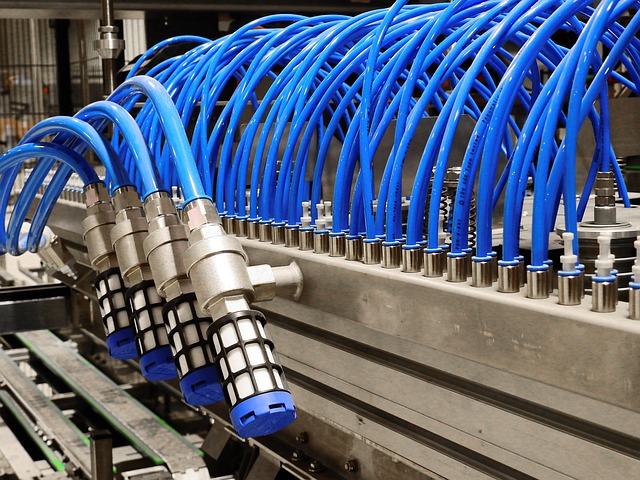Unconventional Investing: Exploring Unique Asset Classes
In the realm of investment, conventional assets such as stocks, bonds, and real estate have long held the spotlight for those looking to grow their wealth. However, with the evolving landscape of finance and the quest for diversification, many savvy investors have begun to explore unconventional investing. This approach encompasses unique asset classes that often fall outside traditional investment paradigms, offering potential for high returns alongside distinctive risks.
Understanding Unconventional Investing
Unconventional investing refers to the practice of allocating capital to non-traditional assets. These investments can range from art and collectibles to cryptocurrencies and timberland. The appeal of unconventional investing lies in the opportunity to tap into markets that may yield exceptional returns, especially in times of economic uncertainty.
The Case for Diversification
One of the key principles of investing is diversification—which helps to spread risk and potentially enhance returns. Traditional asset classes often move in tandem; when stocks decline, bonds may rise, but the correlation can vary. Unconventional assets can help to create a more robust portfolio, often less influenced by mainstream market trends. In turbulent economic climates, these alternative investments may provide stability or even profit potential, as they are not always subject to the same market dynamics.
Unique Asset Classes Explored
Now, let’s delve deeper into some of the most compelling unconventional asset classes that investors are turning to.
Art and Collectibles
The world of art and collectibles represents a fascinating intersection of culture and investment. Collectibles can encompass everything from rare coins and stamps to vintage toys and wines. Art, in particular, has been recognized as a hedge against inflation, as the value of artworks can increase significantly over time, especially for pieces by renowned artists.
However, investing in art and collectibles requires a degree of expertise. Authentication, provenance, and market trends can greatly influence value, making thorough research essential. Understanding the nuances of the art world can help investors avoid pitfalls and capitalize on hidden opportunities.
Cryptocurrencies
Cryptocurrencies have emerged as a notable player in the realm of unconventional investing. Digital currencies like Bitcoin and Ethereum offer an alternative to traditional fiat currencies, with the added allure of decentralization and the potential for substantial returns. The cryptocurrency market is highly volatile, which presents both opportunities and risks. While some early investors have made fortunes, others have faced significant losses.
Investing in cryptocurrencies involves understanding blockchain technology and market sentiment. It’s essential to stay informed about regulatory developments and market trends, as they can impact the value of these digital assets dramatically.
Peer-to-Peer Lending
Peer-to-peer (P2P) lending platforms offer a way for investors to earn returns by lending money directly to individuals or businesses, bypassing traditional financial institutions. Investors can fund loans, earning interest based on the borrower’s creditworthiness and the loan’s terms. This model democratizes lending and can provide attractive returns; however, it also introduces credit risk, as borrowers may default on their obligations.
Before diving into P2P lending, potential investors should assess the risks associated with loan defaults and the platform’s underwriting practices. Proper due diligence is vital to maximizing investment returns in this often-overlooked sector.
Real Estate Crowdfunding
Real estate crowdfunding allows multiple investors to pool their resources to invest in real estate projects, which can range from residential developments to commercial properties. This concept democratizes access to real estate investments, typically reserved for wealthier individuals. Crowdfunding platforms offer an opportunity to invest with lower initial capital, making real estate more accessible.
While real estate can be a stable asset class, the risks include project delays, market downturns, and potential losses from property depreciation. Investors should thoroughly vet crowdfunding platforms, review property performance metrics, and understand the specific terms of investment.
Timberland and Farmland
Investments in timberland and farmland offer unique benefits as they represent tangible assets with intrinsic value. Timberland investments allow investors to capitalize on the growth of trees, while farmland can produce food and commodities, providing cash flow through crop sales. Both asset classes have been shown to hedge against inflation and market volatility, making them appealing for diversification.
Investing in land requires knowledge of local regulations, agricultural practices, and market demand for commodities. Other considerations include climate change and its potential impact on agricultural productivity. As such, due diligence is essential to ensure long-term success in these sectors.
Wine and Spirits
Fine wine and collectible spirits have captured the interest of investors due to their appreciation in value over time. Investing in premium bottles, vintage wines, or limited-edition whiskies can yield significant returns, making this niche market increasingly popular. Similar to art, the value of these items is influenced by provenance, rarity, and market trends.
For investors, knowledge of vintages, labels, and storage conditions is critical to maintaining the value and visibility of the collection. Furthermore, wine investments require proper storage and insurance to protect against spoilage and theft.
Risks and Considerations
While unconventional investments present exciting opportunities, they come with unique risks. Many alternative assets lack historical data and may not be as transparent as traditional investments. As such, investors should be cautious and conduct thorough research when exploring these classes.
Market liquidity can also be a concern with unconventional assets. Unlike stocks or bonds, many alternative investments can be harder to sell quickly at a fair price. Investors should be prepared for longer holding periods and the possibility of lower liquidity.
Building an Unconventional Portfolio
To build an effective portfolio that includes unconventional assets, investors should start with a clear understanding of their risk tolerance, investment horizon, and overall financial goals. A well-balanced approach may include a mix of traditional and unconventional assets to maximize potential returns while managing risk.
Diversifying across multiple unconventional asset classes can also enhance portfolio stability. For example, combining art with farmland and cryptocurrencies can create a more resilient investment approach, reducing the reliance on any single market.
As always, consulting with financial advisors and investment professionals can help in navigating the complexities of unconventional investing, ensuring that decisions align with individual financial needs and circumstances.
Conclusion
Unconventional investing opens the door to unique asset classes that can enhance returns and promote diversification. From art and collectibles to cryptocurrencies and timberland, each asset class presents opportunities and challenges that require careful consideration.
As the investment landscape continues to evolve, understanding and exploring these unconventional avenues can allow investors to stay ahead of the curve and maximize their wealth-building potential. By balancing risk and opportunity, investors can effectively harness the power of unconventional investing within their portfolios.



